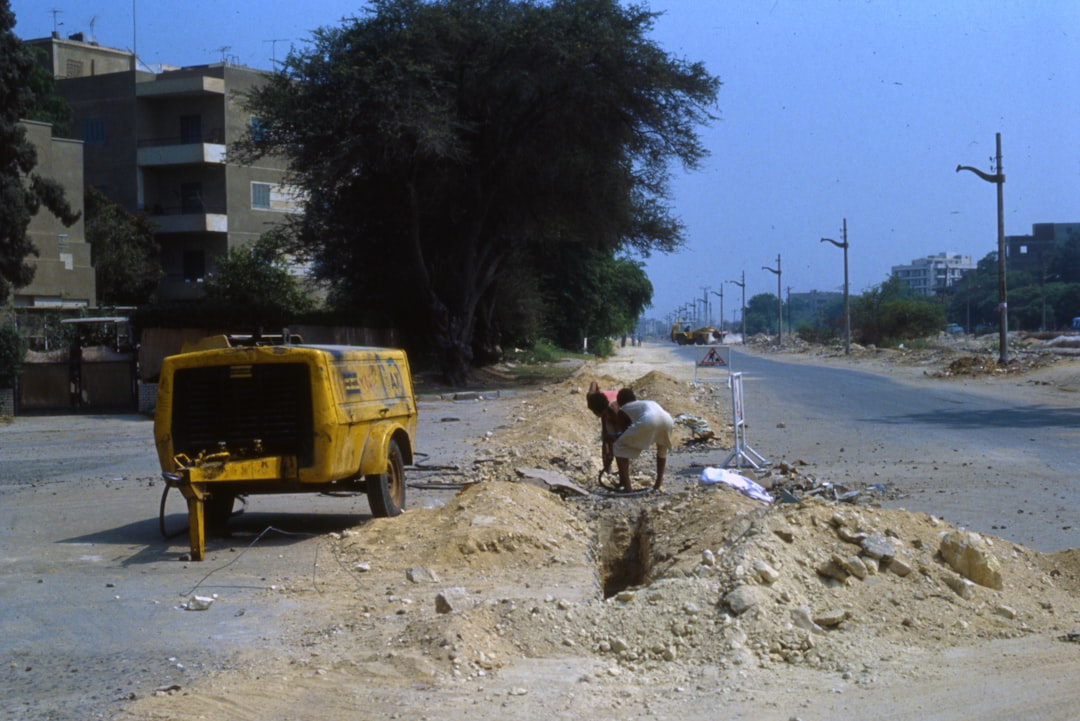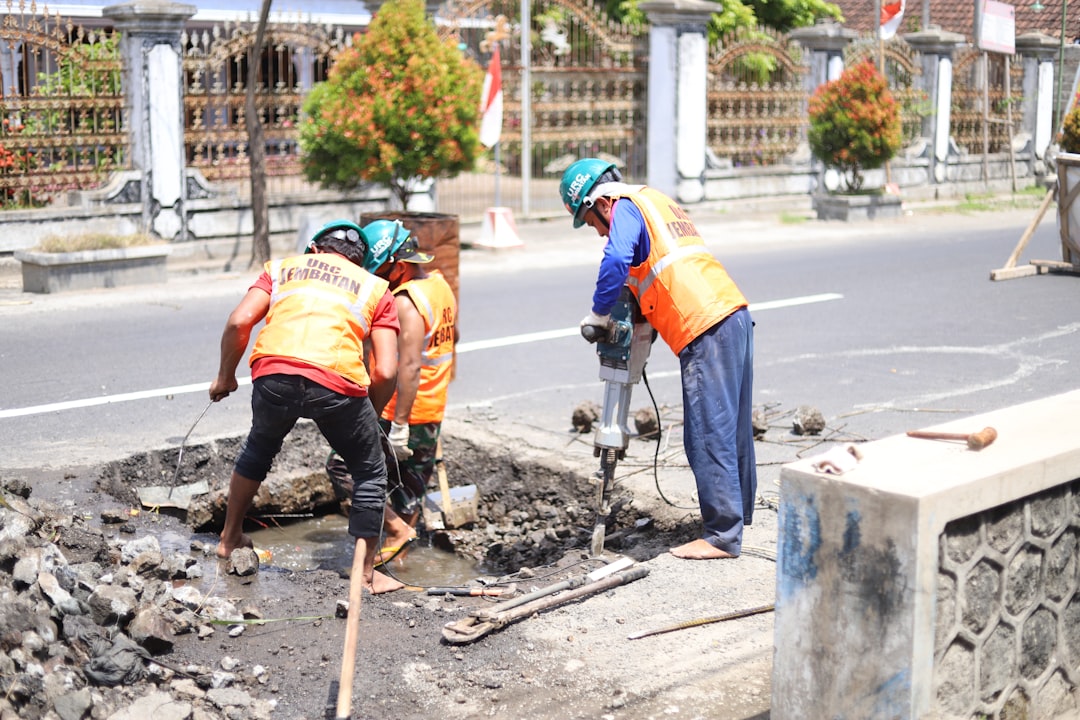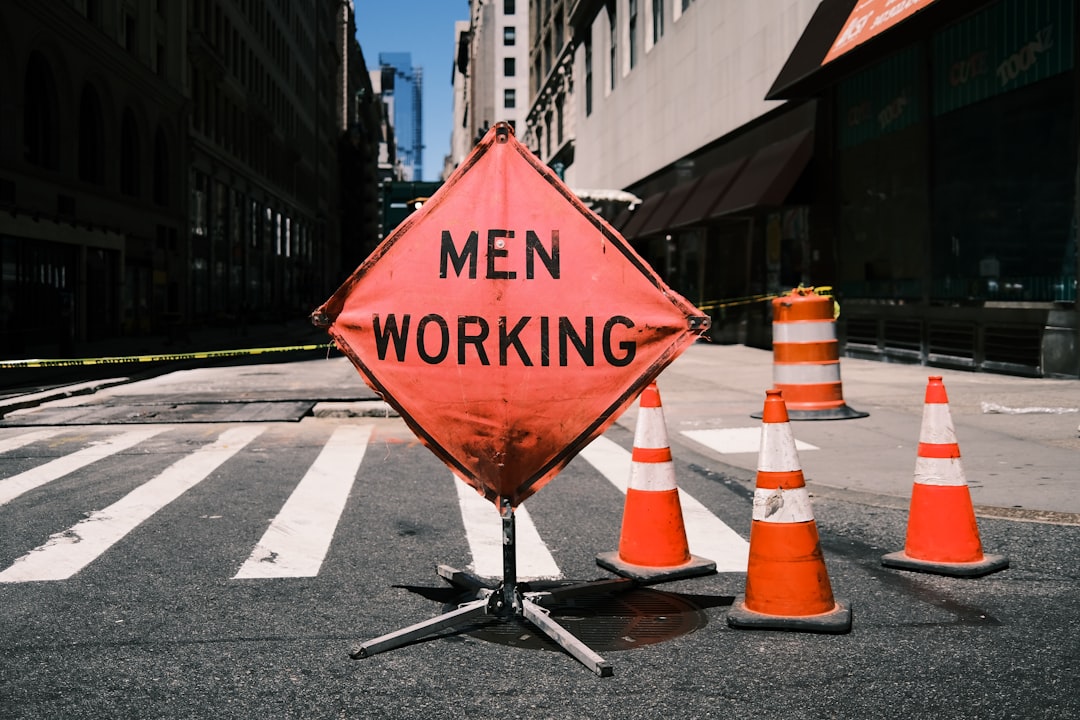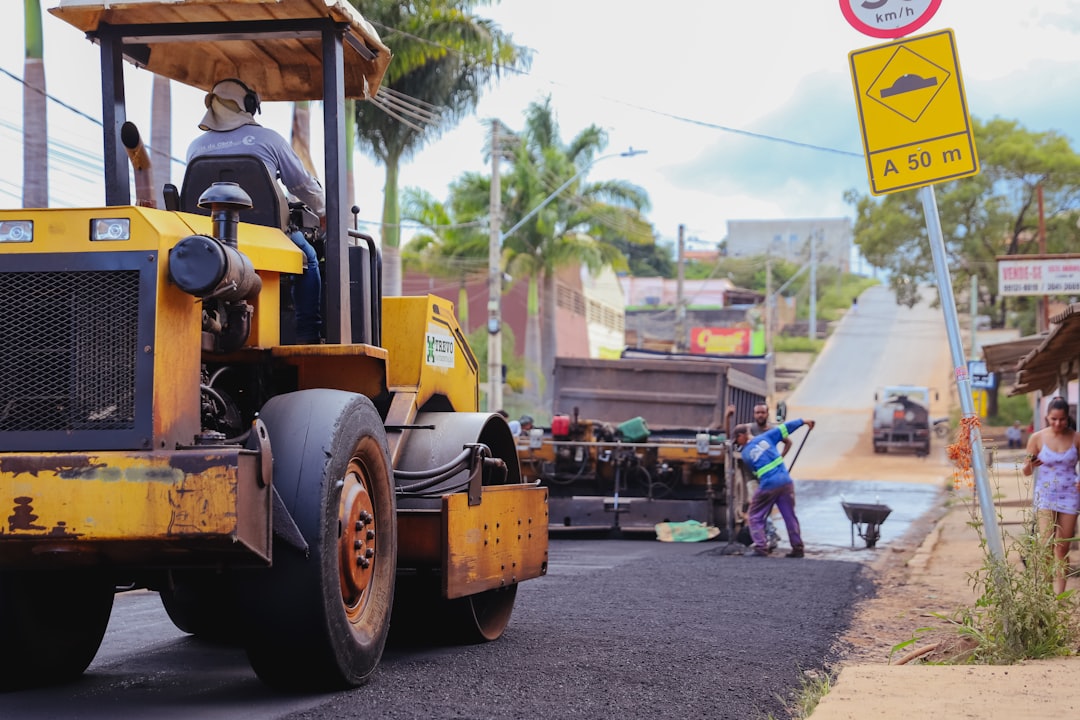

Engage prospects with a scan and streamline customer engagement with FREE QR code marketing tools by Sona – no strings attached!
Create a Free QR CodeFree consultation

No commitment

Engage prospects with a scan and streamline customer engagement with FREE QR code marketing tools by Sona – no strings attached!
Create a Free QR CodeFree consultation

No commitment
QR codes have become a strategic powerhouse for road construction contractors, bridging offline engagement with real-time online action. They offer a frictionless and scalable way to boost operational efficiency, enable instant access to project data, and deliver interactive experiences without complex onboarding hurdles. As infrastructure projects become more digitally connected, QR codes solve common issues such as lost physical documentation, poorly tracked compliance, and missed communication opportunities. For marketing-specific best practices, see this contractor marketing guide.
From streamlining safety documentation to powering on-site asset management and improving stakeholder communications, QR codes unlock new efficiencies where manual or printed workflows often cause confusion. Contractors face persistent challenges with tracking project milestones and ensuring all stakeholders receive current information, especially when assets or updates go unnoticed. QR access transforms regular signage and machinery into always-on digital touchpoints.
Implementing QR code solutions in construction project management improves compliance, transparency, and ROI. Contractors who adopt QR technology quickly gain an edge in safety, efficiency, and engagement, catching important activity signals that are otherwise lost. The following sections detail how contractors can use QR codes to overcome workflow pain points and drive meaningful business outcomes.

QR codes now bridge the gap between physical job sites and essential digital tools, addressing common frustrations such as inaccessible documentation or overlooked updates that delay work. Road construction contractors have long struggled with manual paperwork, missing safety briefs, and disconnected communication. These gaps lead to compliance risks, lost productivity, and the inability to surface engagement from transient or anonymous site visitors like inspectors, subcontractors, and delivery drivers. For a contractor-focused walkthrough, see this contractor walkthrough.
The most effective implementations start with identifying where information breaks down and replacing static materials with dynamic QR experiences that deliver the right content at precisely the right moment. Centralized QR platforms let you manage content updates, track who engages, and close the loop with automated follow-ups. When done correctly, even simple codes on a gate sign or excavator can connect crews to training, checklists, RFIs, or incident reporting without friction.
Streamlining these steps directly tackles the pain of delayed information and untracked high-value activities, while also equipping teams with the tools they need to act on real-time engagement signals. Modern QR code platforms for construction automate content refresh, capture actionable scan analytics, and integrate with core project systems. This helps contractors solve the missed opportunities that occur when key visitors or field interactions go unidentified.

Managing workflows that span large geographic areas, multiple crews, and constantly shifting phases is notoriously difficult. Paper-based systems do not capture who accessed which materials, and static signage cannot keep up with rapid changes in project conditions or regulations. The result is blind spots in safety, compliance, and communication that are costly and dangerous.
QR codes close these gaps by turning every physical surface into an access point for project-critical information and actions. They provide instant access to digital content, enable dynamic updates without reprinting, and generate engagement data that reveals what is working and what needs attention. For road builders, this means less time chasing signatures or outdated information and more time delivering on schedule with documented compliance.
These benefits apply across typical construction materials like gate signage, traffic control boards, equipment decals, and printed plans. Whether you are posting lane closure updates for the public or distributing toolbox talk content to crews, QR codes make information access immediate and measurable.

Road construction teams often grapple with incomplete or inaccessible data in the field. Selecting the right QR format ensures each scan leads to a useful, context-specific action. The most effective formats simplify access to documents, people, networks, and workflows, while dynamic versions add flexibility and analytics for compliance and optimization.
Dynamic QR codes are particularly valuable in construction because project requirements change frequently. With a dynamic code, you can revise the destination content without replacing the printed code and you gain scan analytics that help verify engagement for audits. Platforms like Sona QR support all of these formats and centralize content management, making it easier to maintain consistency across multiple sites and assets.
Growth in road construction is not only about winning more bids. It is also about reducing friction, improving compliance, and capturing opportunities that are otherwise invisible. When you place QR codes at key touchpoints, you gather engagement signals that drive operational improvement and business development.
Strategic placements create a network of always-on gateways that connect people and processes. They also reveal patterns: which teams engage with safety content, which assets generate frequent maintenance requests, and which bid packets prompt decision-maker follow-up. With that visibility, you can refine training, service schedules, and marketing to improve outcomes.
By deploying QR codes at these points, you convert passive materials into active, measurable interfaces. The result is higher data quality, improved responsiveness, and more opportunities to influence outcomes across safety, operations, and business development.

When company or project data is incomplete or outdated, teams struggle to make the right decisions at the right time. QR codes connect real-world actions to digital records, ensuring that every step is both guided and documented. The most valuable use cases support safety, asset management, workforce coordination, and stakeholder communication.
QR implementations can start small and scale quickly. Many contractors begin with a single site or fleet subset, then expand once they see how easy it is to update content and measure engagement. Below are practical use cases that consistently deliver value.
These use cases turn every scan into an actionable event while generating analytics that highlight adoption, gaps, and trends. If you leverage a platform like Sona QR, each event can also trigger workflows in your project or CRM systems for closed-loop execution.
Each scan is a signal. It carries context such as location, time, and use case that can be used to segment audiences and trigger targeted follow-ups. For road contractors that sell services, recruit talent, or nurture relationships with agencies, OEMs, and developers, this is an opportunity to build high-value audiences based on real behavior rather than guesswork.
To make the most of scan data, deploy multiple codes across journeys and tag each one according to stage and intent. Then sync those signals into your CRM and marketing platforms. Sona is an AI-powered marketing platform that turns first-party data into revenue through automated attribution, data activation, and workflow orchestration. For retargeting strategies built on real engagement, see intent-driven retargeting. Over time, you will see patterns that guide content strategy, outreach cadence, and proposal follow-up.
With Sona QR, each code can be configured with metadata that travels into your downstream systems. This eliminates manual tagging and ensures consistency across sites, events, and documents. The result is more precise retargeting, smarter outreach, and better attribution.
Road construction contractors often manage a hybrid mix of business development, public outreach, and workforce communication. QR codes connect these channels, turning offline assets into gateways that feed your digital marketing and operations stack. The benefit is twofold: reduced friction for the audience and measurable data for your team.
As you integrate QR across touchpoints, maintain consistent CTAs and design patterns so scanners know what to expect. Use dynamic destinations to update content as projects evolve, and rely on analytics to optimize placements and messages over time.
A centralized platform like Sona QR keeps placements organized across campaigns and assets. It also makes it easy to sync scan data with your CRM and attribution tools so you can see where awareness is turning into qualified conversations and awarded work.
A successful QR rollout follows a clear plan: define the use case, choose the right QR type, design for the environment, deploy thoughtfully, and optimize with data. Treat QR campaigns as continuous improvement cycles. As you learn which placements and CTAs perform, iterate and scale.
The following steps provide a disciplined path from concept to impact. They work for safety, operations, business development, and public communication use cases alike. Customize each step for your project context and audience needs.
Start with a specific outcome and the audience you want to engage. Examples include mandatory safety briefings at every site entry, digital pre-trip inspections for pavers and rollers, or interactive portfolio access in bid packets. Clearly define what action you want after the scan, such as acknowledgment, form completion, or content consumption.
Choose static codes for unchanging destinations like vCards or generic contact pages. Opt for dynamic codes when you need editability, tracking, or A/B testing. Dynamic codes are ideal for safety documents, plans, and campaigns that evolve. For broader strategy context, see QR codes in marketing.
Effective design increases scan rates and reduces frustration. Add a clear CTA near the code and ensure contrast, size, and placement match field realities. Test in real conditions, including glare, distance, and PPE constraints.
Focus on placements where missed information causes bottlenecks. Roll out in phases, starting with one site or asset class. Capture feedback from field users and adjust before scaling.
Use analytics to measure scan volume, completion rates, and downstream actions. Adjust content, CTAs, and placements based on real-world performance. The goal is to make QR interactions second nature for your teams and stakeholders.
Attributing actions to outcomes is a longstanding challenge in construction. Traditional methods make it hard to connect field engagement with safety improvements, cost savings, or awarded work. QR code analytics bring clarity by tying every scan to a time, place, and intent, enabling you to measure impact across operations and business development. For measurement frameworks, see offline attribution.
Analytics should go beyond raw scan counts. Track engagement by media and location, measure conversion events on linked pages, and integrate with your CRM or project systems to create a full chain of custody from scan to outcome. This allows you to prove ROI on safety initiatives, optimize asset uptime, and attribute marketing influence in the bid cycle.
By transforming each scan into an actionable data point, contractors refine workflows, shore up compliance, and prevent lost business that stems from anonymous or disengaged stakeholders.
Many QR deployments underperform because they are not tracked, not integrated, or not designed for the realities of the field. To maximize value, treat QR codes as part of an ongoing change management effort. Educate teams on why scanning matters, make codes impossible to miss, and connect scan events to automated follow-ups that save time.
Start with a handful of high-visibility use cases, then scale steadily as you build trust and muscle memory. Celebrate quick wins, share analytics, and invite feedback from operators, foremen, and inspectors to improve adoption.
A creative example: place QR codes on high-use maintenance equipment that launch a live service request with the asset ID pre-filled. Another example: add a QR to pay apps and invoices for quick documentation uploads from suppliers, reducing administrative back-and-forth and accelerating approvals.

Contractors often cite inconsistent reporting and missed follow-up as reasons initiatives stall. QR code programs show tangible improvements when they are thoughtfully deployed and integrated. The examples below highlight both operational and business development wins that come from turning offline touchpoints into digital gateways. For operations examples, see this construction QR guide.
Real gains come from combining strategic placements with automation and analytics. When every scan triggers a next step and a record, you create a system that compounds benefits across safety, productivity, and revenue.
Industry analysts expect QR usage to grow as road construction integrates with IoT, telematics, and smart city systems. Each scan becomes high-fidelity telemetry that informs centralized decision-making and real-time operations.
QR programs fail when they ignore field constraints or rely on static links that go stale. Success requires attention to design, placement, training, and integration. Begin with the basics that ensure scannability and clarity, then mature into automation and analytics that compound value.
Pilot your approach on one site with multiple use cases. Iterate quickly based on feedback. Only then expand to fleets and additional locations. This avoids the trap of broad but shallow adoption that yields little data and less trust.
By addressing these details upfront, you reduce friction, build confidence, and create a dependable stream of engagement data that improves both operations and outcomes.
QR codes are more than a shortcut for pulling up a webpage. They are a strategy for connecting people, equipment, and information across rugged environments and shifting project conditions. For road construction contractors, each code transforms a physical touchpoint into a digital entry point and each scan into a measurable signal.
Here is what that delivers at scale: immediate access to critical documentation and procedures; unified workflows that bridge the field and back office; and analytics that tie engagement to safety, productivity, and revenue. The result is fewer blind spots, faster decisions, and stronger performance across the entire project lifecycle.
Getting started is straightforward. Identify your highest-friction touchpoints, deploy dynamic QR codes with clear CTAs, and connect scans to automated workflows. Platforms like Sona QR make it easy to generate codes, manage destinations, track performance, and sync data into systems like HubSpot, Salesforce, and Sona.com for attribution. To connect CRM and attribution, see Integrate Sona with HubSpot. Start creating QR codes for free.
QR codes have transformed the road construction contractors industry by turning traditional project communication and site access into streamlined, measurable workflows. Whether it’s enabling instant access to project details, improving safety compliance, or facilitating real-time updates, QR codes replace cumbersome paperwork with mobile-friendly solutions that capture actionable data and enhance operational efficiency. Imagine instantly verifying contractor credentials or accessing up-to-date work orders on-site with a simple scan—saving time and reducing errors.
With Sona QR, creating dynamic, trackable QR codes is effortless. You can update access permissions or project information instantly without reprinting signs or passes, ensuring every scan connects directly to the right data at the right time. No more delays or miscommunications—just smarter, safer, and more efficient road construction projects.
Start for free with Sona QR today and revolutionize how your team accesses, manages, and tracks critical site information, one scan at a time.
QR codes improve operational efficiency, enable instant access to project data, enhance safety and compliance, reduce printing costs, and provide measurable engagement analytics.
Contractors can use QR codes on brochures, fleet graphics, and bid documents to link prospects to project galleries, safety metrics, and case studies, enabling data-driven retargeting and audience segmentation.
QR codes can be placed on site entrances for digital sign-in, on equipment for maintenance checklists, on safety boards for briefings, on traffic signs for live updates, and in bidding documents for enhanced evaluator engagement.
Platforms like Sona QR are leading by providing centralized management, dynamic code generation, analytics, and integration with CRM and project management systems for road construction use.
They provide instant access to updated safety procedures, enable digital acknowledgments, streamline equipment inspections, improve communication, and track engagement to prevent compliance gaps.
Use Sona QR's trackable codes to improve customer acquisition and engagement today.
Create Your FREE Trackable QR Code in SecondsJoin results-focused teams combining Sona Platform automation with advanced Google Ads strategies to scale lead generation

Connect your existing CRM

Free Account Enrichment

No setup fees
No commitment required

Free consultation

Get a custom Google Ads roadmap for your business






Launch campaigns that generate qualified leads in 30 days or less.
